Bo Tan
Detection with Uncertainty in Target Direction for Dual Functional Radar and Communication Systems
Dec 10, 2024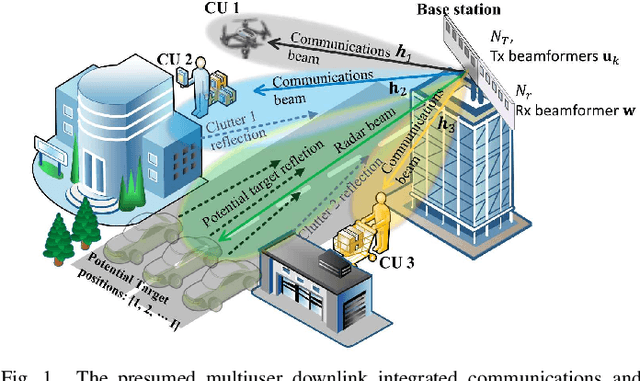
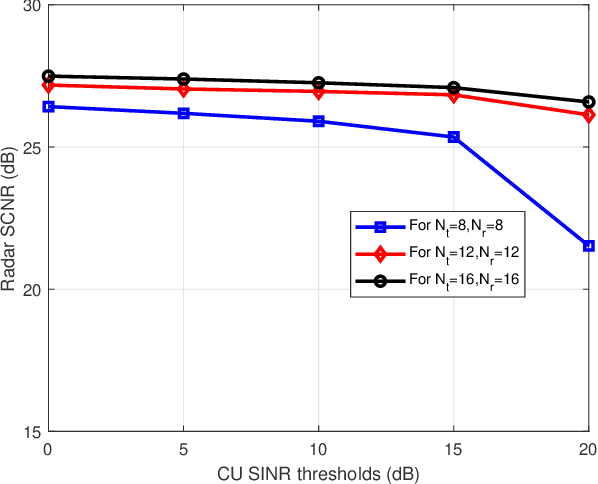
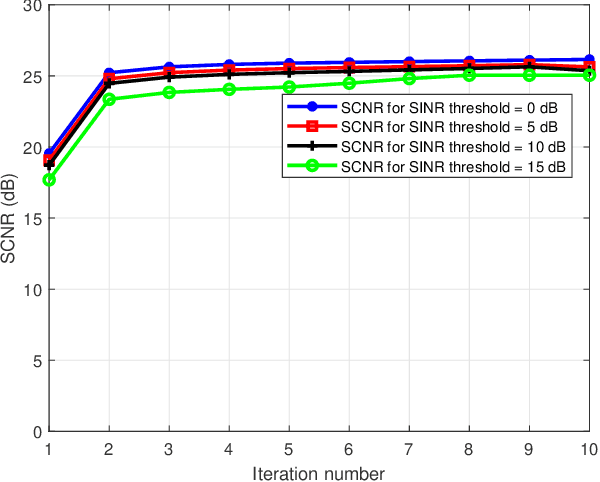
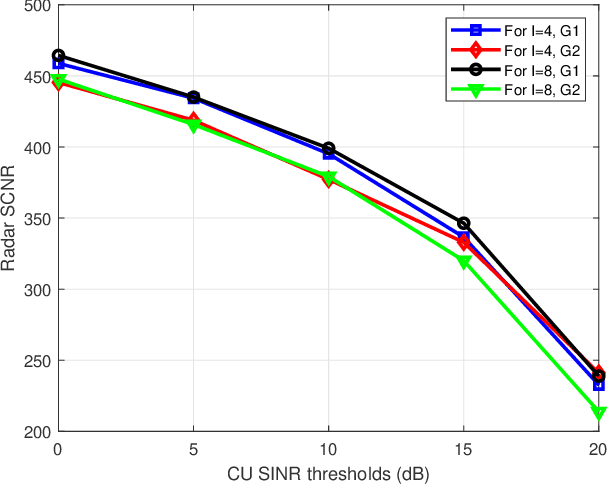
Abstract:Dual functional radar and communication (DFRC) systems are a viable approach to extend the services of future communication systems. Most studies designing DFRC systems assume that the target direction is known. In our paper, we address a critical scenario where this information is not exactly known. For such a system, a signal-to-clutter-plus-noise ratio (SCNR) maximization problem is formulated. Quality-of-service constraints for communication users (CUs) are also incorporated as constraints on their received signal-to-interference-plus-noise ratios (SINRs). To tackle the nonconvexity, an iterative alternating optimization approach is developed where, at each iteration, the optimization is alternatively performed with respect to transmit and receive beamformers. Specifically, a penalty-based approach is used to obtain an efficient sub-optimal solution for the resulting subproblem with regard to transmit beamformers. Next, a globally optimal solution is obtained for receive beamformers with the help of the Dinkleback approach. The convergence of the proposed algorithm is also proved by proving the nondecreasing nature of the objective function with iterations. The numerical results illustrate the effectiveness of the proposed approach. Specifically, it is observed that the proposed algorithm converges within almost 3 iterations, and the SCNR performance is almost unchanged with the number of possible target directions.
Enhancing Physical Layer Security with Deep SIMO Auto-Encoder and RF Impairments Modeling
Apr 30, 2024Abstract:This paper presents a novel approach to achieving secure wireless communication by leveraging the inherent characteristics of wireless channels through end-to-end learning using a single-input-multiple-output (SIMO) autoencoder (AE). To ensure a more realistic signal transmission, we derive the signal model that captures all radio frequency (RF) hardware impairments to provide reliable and secure communication. Performance evaluations against traditional linear decoders, such as zero-forcing (ZR) and linear minimum mean square error (LMMSE), and the optimal nonlinear decoder, maximum likelihood (ML), demonstrate that the AE-based SIMO model exhibits superior bit error rate (BER) performance, but with a substantial gap even in the presence of RF hardware impairments. Additionally, the proposed model offers enhanced security features, preventing potential eavesdroppers from intercepting transmitted information and leveraging RF impairments for augmented physical layer security and device identification. These findings underscore the efficacy of the proposed end-to-end learning approach in achieving secure and robust wireless communication.
CrossGLG: LLM Guides One-shot Skeleton-based 3D Action Recognition in a Cross-level Manner
Mar 15, 2024
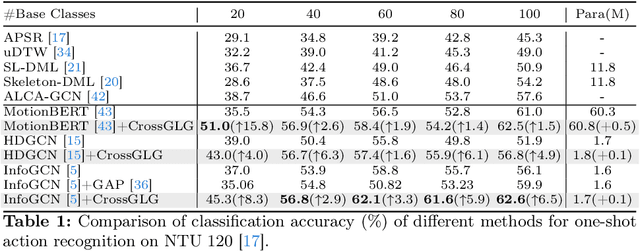
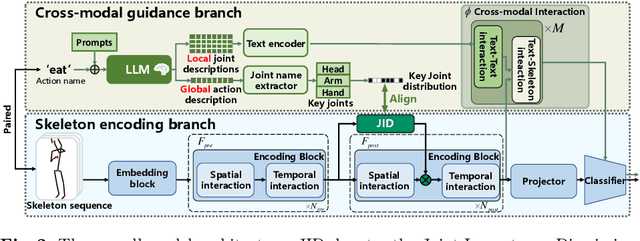

Abstract:Most existing one-shot skeleton-based action recognition focuses on raw low-level information (e.g., joint location), and may suffer from local information loss and low generalization ability. To alleviate these, we propose to leverage text description generated from large language models (LLM) that contain high-level human knowledge, to guide feature learning, in a global-local-global way. Particularly, during training, we design $2$ prompts to gain global and local text descriptions of each action from an LLM. We first utilize the global text description to guide the skeleton encoder focus on informative joints (i.e.,global-to-local). Then we build non-local interaction between local text and joint features, to form the final global representation (i.e., local-to-global). To mitigate the asymmetry issue between the training and inference phases, we further design a dual-branch architecture that allows the model to perform novel class inference without any text input, also making the additional inference cost neglectable compared with the base skeleton encoder. Extensive experiments on three different benchmarks show that CrossGLG consistently outperforms the existing SOTA methods with large margins, and the inference cost (model size) is only $2.8$\% than the previous SOTA. CrossGLG can also serve as a plug-and-play module that can substantially enhance the performance of different SOTA skeleton encoders with a neglectable cost during inference. The source code will be released soon.
Millimeter-wave Radio SLAM: End-to-End Processing Methods and Experimental Validation
Dec 21, 2023Abstract:In this article, we address the timely topic of cellular bistatic simultaneous localization and mapping (SLAM) with specific focus on complete processing solutions from raw I/Q samples to user equipment (UE) and landmark location information in millimeter-wave (mmWave) networks. Firstly, we propose a new multipath channel parameter estimation solution which operates directly with beam reference signal received power (BRSRP) measurements, alleviating the need to know the true antenna beampatterns or the underlying beamforming weights. Additionally, the method has built-in robustness against unavoidable antenna sidelobes. Secondly, we propose new snapshot SLAM algorithms that have increased robustness and identifiability compared to prior-art, in practical built environments with complex clutter and multi-bounce propagation scenarios. The performance of the proposed methods is assessed at the 60 GHz mmWave band, via both realistic ray-tracing evaluations as well as true experimental measurements, in an indoor environment. Wide set of offered results clearly demonstrate the improved performance, compared to the relevant prior-art, in terms of the channel parameter estimation as well as the end-to-end SLAM performance. Finally, the article provides the measured 60 GHz data openly available for the research community, facilitating results reproducibility as well as further algorithm development.
Low Complexity Algorithms for Mission Completion Time Minimization in UAV-Based ISAC Systems
Oct 12, 2023



Abstract:The inherent support of sixth-generation (6G) systems enabling integrated sensing and communications (ISAC) paradigm greatly enhances the application area of intelligent transportation systems (ITS). One of the mission-critical applications enabled by these systems is disaster management, where ISAC functionality may not only provide localization but also provide users with supplementary information such as escape routes, time to rescue, etc. In this paper, by considering a large area with several locations of interest, we formulate and solve the optimization problem of delivering task parameters of the ISAC system by optimizing the UAV speed and the order of visits to the locations of interest such that the mission time is minimized. The formulated problem is a mixed integer non-linear program which is quite challenging to solve. To reduce the complexity of the solution algorithms, we propose two circular trajectory designs. The first algorithm finds the optimal UAV velocity and radius of the circular trajectories. The second algorithm finds the optimal connecting points for joining the individual circular trajectories. Our numerical results reveal that, with practical simulation parameters, the first algorithm provides a time saving of at least $20\%$, while the second algorithm cuts down the total completion time by at least $7$ times.
Fault-Tolerant Collaborative Inference through the Edge-PRUNE Framework
Jun 16, 2022


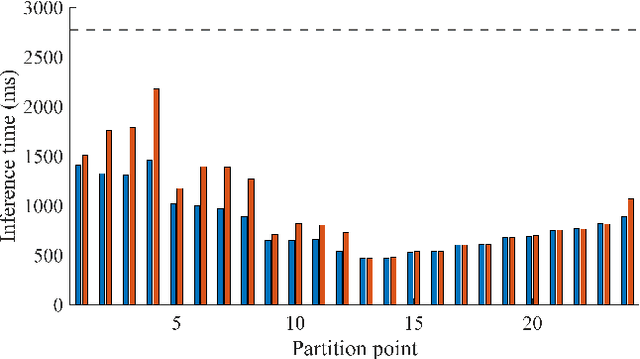
Abstract:Collaborative inference has received significant research interest in machine learning as a vehicle for distributing computation load, reducing latency, as well as addressing privacy preservation in communications. Recent collaborative inference frameworks have adopted dynamic inference methodologies such as early-exit and run-time partitioning of neural networks. However, as machine learning frameworks scale in the number of inference inputs, e.g., in surveillance applications, fault tolerance related to device failure needs to be considered. This paper presents the Edge-PRUNE distributed computing framework, built on a formally defined model of computation, which provides a flexible infrastructure for fault tolerant collaborative inference. The experimental section of this work shows results on achievable inference time savings by collaborative inference, presents fault tolerant system topologies and analyzes their cost in terms of execution time overhead.
Wi-Fi Based Passive Human Motion Sensing for In-Home Healthcare Applications
Apr 13, 2022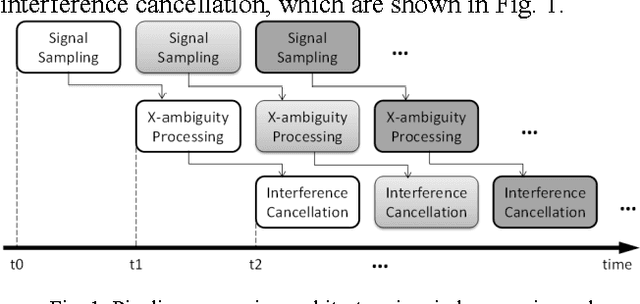
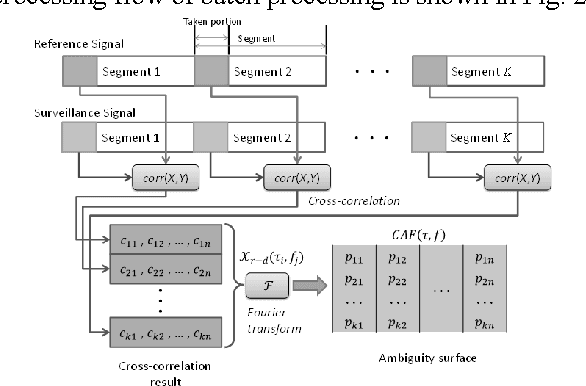
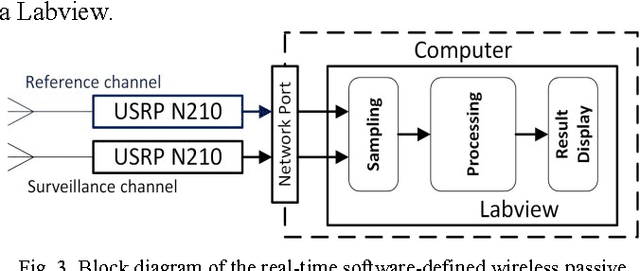
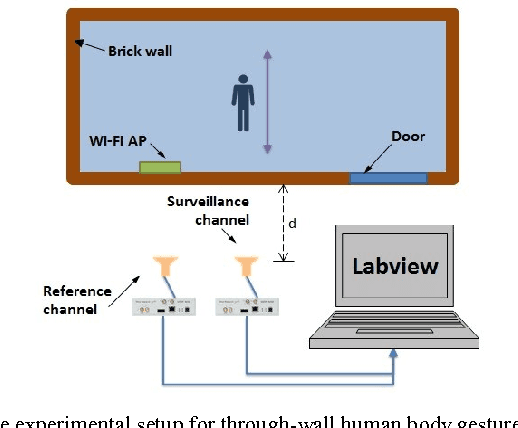
Abstract:This paper introduces a Wi-Fi signal based passive wireless sensing system that has the capability to detect diverse indoor human movements, from whole body motions to limb movements and including breathing movements of the chest. The real time signal processing used for human body motion sensing and software defined radio demo system are described and verified in practical experiments scenarios, which include detection of through-wall human body movement, hand gesture or tremor, and even respiration. The experiment results offer potential for promising healthcare applications using Wi-Fi passive sensing in the home to monitor daily activities, to gather health data and detect emergency situations.
Improved Sensing and Positioning via 5G and mmWave radar for Airport Surveillance
Feb 28, 2022
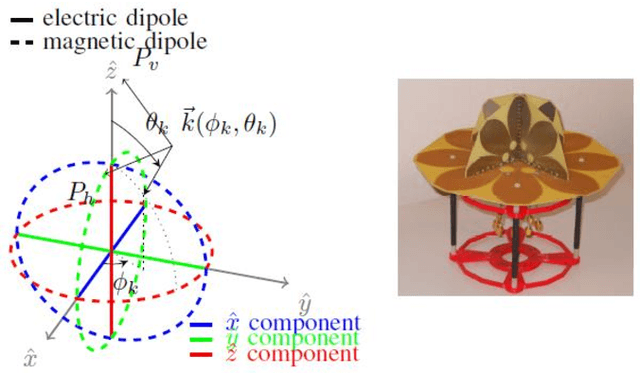
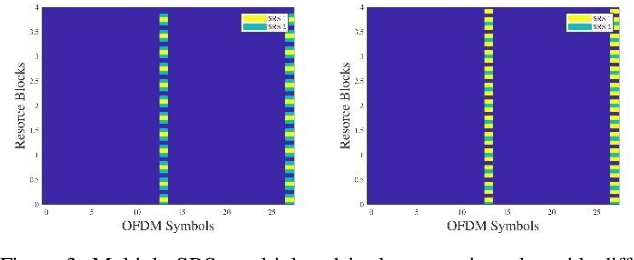
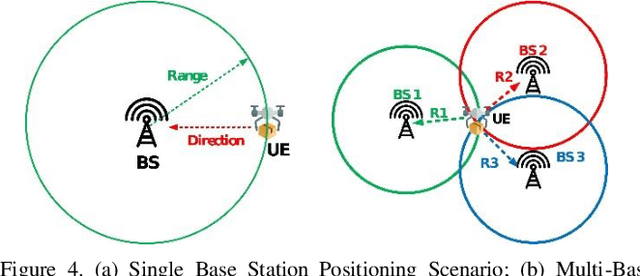
Abstract:This paper explores an integrated approach for improved sensing and positioning with applications in air traffic management (ATM) and in the Advanced Surface Movement Guidance and Control System (A-SMGCS). The integrated approach includes the synergy of 3D Vector Antenna with the novel time-of-arrival and angle-of-arrival estimate methods for accurate positioning, combining the sensing on the sub-6GHz and mmWave spectrum for the enhanced non-cooperative surveillance. For the positioning scope, both uplink and downlink 5G reference signals are investigated and their performance is evaluated. For the non-cooperative sensing scope, a novel 5G-signal-based imaging function is proposed and verified with realistic airport radio-propagation modelling and the AI-based targets tracking-and-motion recognition are investigated. The 5G-based imaging and mmWave radar based detection can be potentially fused to enhance surveillance in the airport. The work is being done within the European-funded project NewSense and it delves into the 5G, Vector Antennas, and mmWave capabilities for future ATM solutions.
Using Wi-Fi Signal as Sensing Medium: Passive Radar, Channel State Information and Followups
Jan 09, 2022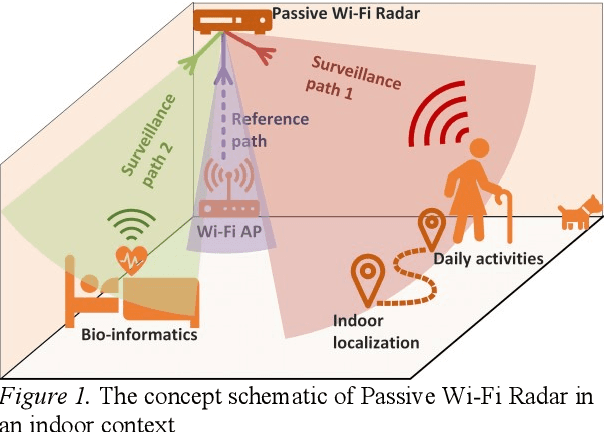
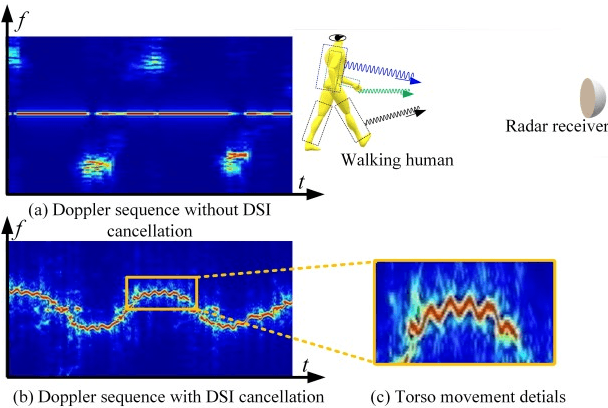
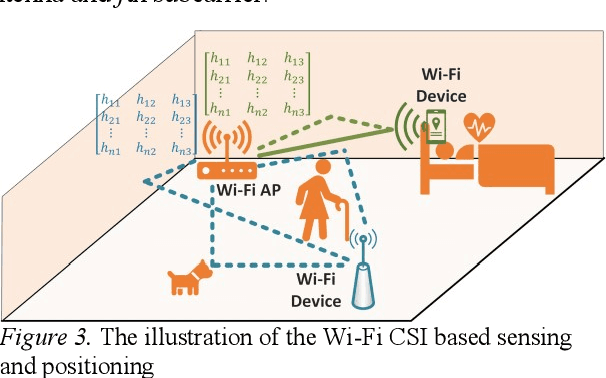
Abstract:The idea of exploiting the Wi-Fi bursts as the medium for sensing purposes, particularly for the human targets in the indoor environment, was cultivated in both radar and computer science communities and it has became a noticeable research genre with cross-disciplinary impact in security, healthcare, human-machine interaction etc.This article comparatively introduces passive radar based and channel state information (CSI) based approaches. For each means, the primary design principles, signal processing and representative applications scenarios are shown. At last, some opportunities and challenges of Wi-Fi sensing are pointed out for the sake of stepping closer to the practitioners and end-users.
Converging Radar and Communications in the Superposition Transmission
Aug 24, 2021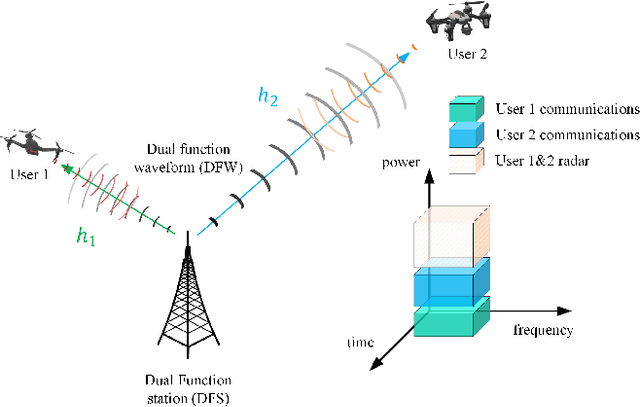
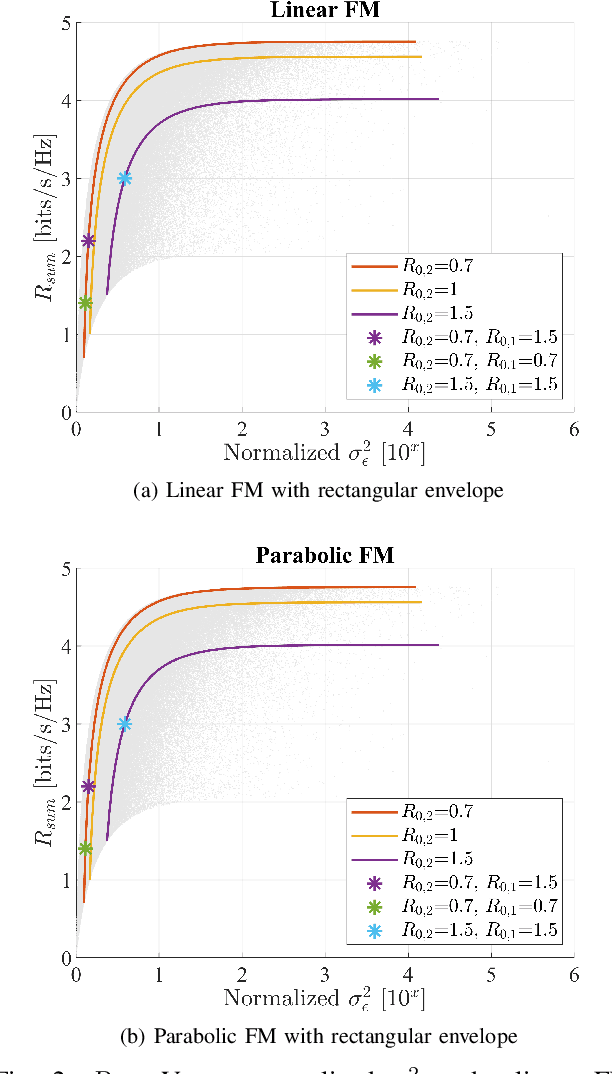
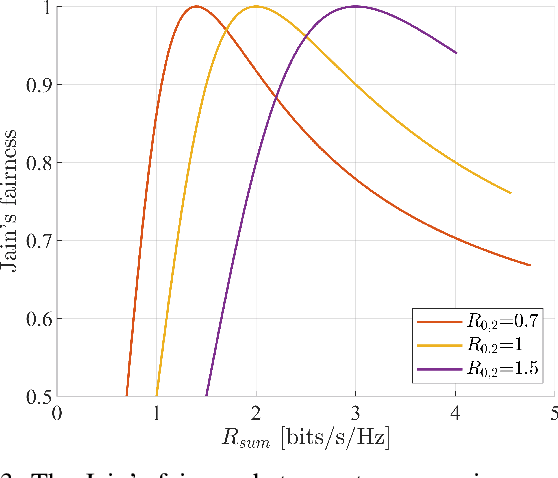
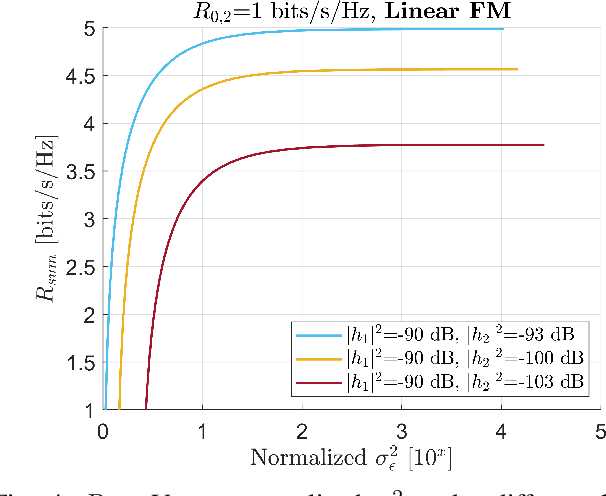
Abstract:This paper proposes a superposition transmission scheme for the future Radio Frequency (RF) convergence applications. The scheme is discussed under the assumption of a mono-static broadcasting channel topology. Under communications quality-of-service (QoS) constraints, the joint performance region of communications sum rate and radar estimation error variance is studied. Two radar signal waveforms, namely linear FM and parabolic FM, are used to investigate how signal shapes may influence the estimation accuracy. Both waveforms are generated with rectangular envelope. In the end, a numerical analysis is applied, which concludes that a moderate communications QoS promises a good communications fairness while with the limited radar performance degradation.
 Add to Chrome
Add to Chrome Add to Firefox
Add to Firefox Add to Edge
Add to Edge